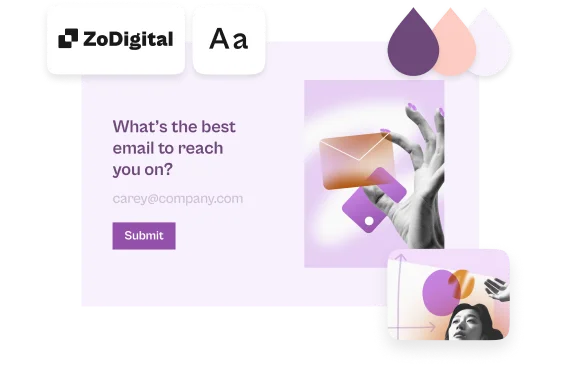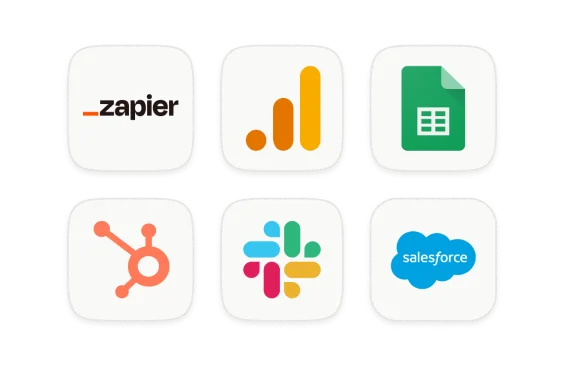Contents
01 What is zero-party data?02 How to collect zero-party data03 Creating a zero-party data strategy04 There’s no better time to get to know your customersFor years, marketers have relied on “cookies'' that collect third-party data to create personalized ads and tailor better online experiences. These cookies are placed by third-party websites to track a visitor’s online activities. However, in response to privacy concerns, third-party cookies—and, by extension, third-party data — are being phased out. Google has announced a plan to disable third-party cookies for 1% of users in Q1 2024 and remove them completely by Q3 2024. Apple has also taken a public stance on privacy measures and has blocked many third-party cookies.
The death of third-party cookies signals a new era in digital marketing. Marketers are now turning to zero-party data (ZPD) to develop more consumer-centric and privacy-aware digital marketing campaigns. ZPD uses voluntarily shared customer data, creating a goldmine of valuable information for forward-thinking marketers—without violating consumer trust or privacy.
What is zero-party data?
Zero-party data refers to any data that a customer voluntarily chooses to share with a business. This could be when a customer completes a survey or indicates a preference through a quiz. Some of the best examples of zero-party data include:
Survey responses—Customer feedback provided through surveys or questionnaires. Explicit indications of product or service preferences, usually provided through quiz responses or selections in forms.
Subscription preferences—Opt-in choices for newsletters or specific content delivered straight to a customer’s email.
Purchase intent data—Directly volunteered information about purchase intents or interests.
Contact information—Willingly shared personal details, like phone numbers or email addresses.
Loyalty programs—Through customer signups, businesses can directly obtain insights into things like purchase history, preferences, and contact details.
In addition to zero-party data, there are other types of data collection methods:
First-party data—Information about the customer that a company collects from its own sources, such as its website, apps, or social media channels. This could be website heatmaps or social engagement data.
Second-party data—This is essentially someone else's first-party data, where one company buys data from another company, usually through partnerships or direct agreements. It originates from another organization's direct interactions with its customers.
Third-party data—Data acquired from various external sources not directly gathered by the business. This information, which is sold by data providers, includes aggregated data, demographic details, and behavioral patterns.
ZPD offers lots of opportunities for personalized experiences. As consumers and regulators alike grow skeptical of the data industry and even of first-party data collection efforts, ZPD offers immense potential. Its benefits surpass other data types, particularly third-party data. ZPD garners higher trust as customers willingly share accurate information, fostering stronger brand-customer relationships. Third-party data often relies on inferences, and inaccuracies can arise as data moves between systems. Because ZPD is acquired directly from users, it's more up-to-date and reliable.
How to collect zero-party data
Zero-party data collection involves using natural and engaging methods that prioritize giving users something valuable in return for their information. Ensuring a seamless, personalized experience is paramount to preventing user fatigue and abandonment.
Some key methods for collecting ZPD include:
Surveys—Tailored to the user's recent experiences, surveys ask for feedback after specific interactions like a purchase.
Quizzes—Interactive and engaging quizzes offer tailored advice or product suggestions based on users' answers when they share their email addresses voluntarily. For instance, a skin care quiz might provide personalized skin care tips or product recommendations suited to a user's specific skin type or concerns.
Forms—Add other fields beyond the conventional name and email fields to get more insight from customers about their preferences.
Interactive tools—Practical online features like mortgage calculators or personality assessments that users engage with to gather their preferences or receive personalized information.
Ranking and rating tools—Employ within product listings or post-interaction surveys to gather active user feedback about your product or brand.
Social media platforms—Interactive polls and Q&A sessions via your platforms engage users while also collecting ZPD.
Transactional data capture—Includes post-purchase queries about things like how they found out about your brand or inviting them to join your loyalty program.
ZPD collection should integrate seamlessly into touchpoints across the customer journey. It's important to use language that customers naturally use, fostering a sense of being heard and valued. Simplifying these engagement methods enhances user participation, ensuring a more fruitful ZPD collection experience.
Creating a zero-party data strategy
After gathering valuable zero-party data, the next step is crafting a strategy to leverage its potential in marketing and customer retention campaigns. Let's look at some specific tactics for a robust zero-party data strategy that enhances marketing efforts, drives conversion rates, and fosters lasting customer loyalty.
1. Improve personalization and retargeting in ad campaigns
Effective personalization extends beyond addressing customers by name; it entails offering precisely what they want, when they want it. By leveraging zero-party data in highly targeted ad campaigns, businesses develop deeper connections with their audience, leading to higher engagement and improved campaign effectiveness.
Crafting tailor-made promotions and deals based on zero-party data insights is a game-changer for your marketing strategy. You can use the valuable insights you have gained about your customers' preferences, such as seasonal shopping habits or preferred sales events. Sending timely, personalized offers and messages that are aligned with these preferences significantly boosts conversion rates by making your customer base feel genuinely understood.
2. Deliver personalized user experiences through your website
Using ZPD, companies can tailor a user’s journey on their website according to their individual preferences and behaviors. For instance, you can leverage a user's interests or past interactions to curate content suggestions, offering a more relevant and engaging experience. Incorporate ZPD to create dynamic website elements, such as personalized recommendations or content blocks.
This level of personalization heightens user engagement, extends session duration, and significantly increases the likelihood of conversions.
3. Create A/B groups based on known customer preferences
Zero-party data insights can also be used as a basis for A/B testing based on many elements. First, you can create distinct customer profiles aligned with different interests, behaviors, or preferences. Then, you can run A/B tests based on these groups to experiment with tailored strategies, content variations, or product offerings.
This approach ensures that marketing efforts resonate better with each segmented audience, ultimately leading to higher engagement and improved campaign performance.
4. Improve customer experiences
Zero-party data offers multiple ways to enhance the customer experience. First, ZPD can be used in product development. Think of it as having access to a focus group in real time. Through ZPD collection, customers can suggest product features they’re interested in, such as water-resistant product variants or eco-friendly packaging.
ZPD can also be used to help your customer success teams foster a personalized and attentive experience. For instance, ZPD insights might reveal that your customers are frustrated with the timeliness of your responses or that they prefer to communicate over email rather than through phone calls. Your customer support team can prioritize communication channels and streamline processes accordingly.
By using ZPD to analyze customer behavior, it becomes an effective tool for identifying potential causes of churn. Understanding why customers leave allows businesses to proactively address pain points, personalize experiences, and cater to their preferences. This fosters trust, bolsters loyalty, and encourages customer advocacy, leading to sustained growth and retention.
There’s no better time to get to know your customers
With the impending phasing out of third-party cookies, zero-party data holds the key to the future of digital and ecommerce marketing. But zero-party data is more than just a replacement for third-party cookie data. It's the most effective way to acquire genuine, personalized insights from your customers while prioritizing their data privacy.
Try Typeform to transform data collection into engaging conversations, driving data-backed marketing decisions, personalized experiences, and an overall positive value exchange.







